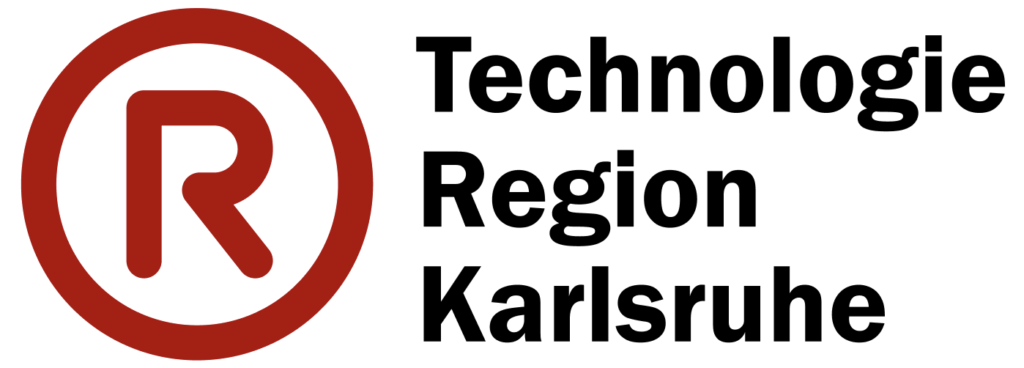Focus on hydrogen - H2iPortKA
A successful energy transition requires a combination of security of supply, affordability and environmental compatibility through innovative climate protection. Hydrogen plays a central role in reducing CO₂ emissions in industry and transportation through renewable energies. The project partners in the Karlsruhe TechnologyRegion (TRK) are pursuing this goal with the H2iPortKA.

A model for the future
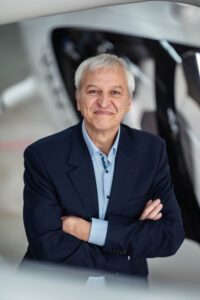
The Karlsruhe TechnologyRegion recognized the importance of hydrogen technologies early on and, together with other partners, initiated a model project to promote the development of a hydrogen economy. In 2021, the first group of stakeholders was formed to develop a concept for a hydrogen model region in Karlsruhe. A central component of this was the development of a hydrogen hub in the Rhine port of Karlsruhe. After a good year and a half of intensive work, this initially rough idea has now been fleshed out. We have now been able to develop a realistic idea for a hydrogen hub in the Rhine ports of Karlsruhe. I would like to thank all those involved in "H2iPortKA Mod" who have contributed their expertise and worked together in a spirit of trust. In particular, I would like to thank the project manager Dr. Peter Berlet from IAVF GmbH for his tireless efforts and for assuming overall responsibility for this project funded by the state of Baden-Württemberg. I would also like to thank Prof. Dr. Karsten Pinkwart from Fraunhofer ICT and Karlsruhe University of Applied Sciences, who helped initiate this project. The core of the modulation is the extraordinary technical expertise of Prof. Dr. Marco Braun's team at Karlsruhe University of Applied Sciences, which was responsible for the superstructure and the computational model. The presentation of the interim results has already generated a great deal of attention and interest in the transfer to other regions.
After completing the "H2iPortKA Mod" project, I have come to two key conclusions: Firstly , the hydrogen economy is still in its infancy and development will not be economically viable without significant financial support. Secondly, a strong network is crucial to the successful implementation of such complex projects. Despite many uncertainties, such as the availability of green hydrogen by 2030, the region is committed to building the necessary infrastructure.
I hope you enjoy reading the brochure on the "H2iPortKA Mod" project, which you can find here. It contains the analysis and evaluation of various scenarios and deals with the current status of the hydrogen economy.
Jochen Ehlgötz
What is the H2iPortKA project about?
The rapid development of a hydrogen (H2) economy is one of the major challenges of the coming years. Major investments are required to restructure the energy supply. Karlsruhe offers excellent conditions for this with the Rhine ports, municipal utility companies, medium-sized industrial research institutions and large, relevant players in the area such as EnBW, MiRO, Siemens and Daimler Truck. The local road and rail networks are directly connected to European east-west and north-south axes.
However, there is a lack of concrete, integrated plans for an urgently needed H2 import infrastructure south of Mannheim with connections to the Alsace/France and Basel/Switzerland regions to meet the increasing demand for H2. For the targeted selection and design of individual components of the four process fields of delivery, treatment/conversion/storage, local generation and release of H2, their configuration and dimensioning, many assumptions have to be made and parameters
have to be varied.
To this end, existing models from Karlsruhe University of Applied Sciences are being expanded and parameterized with the technical and economic data of the participating companies. The model identifies system structures, holistically optimized investments, the plant design and its control strategy with a multi-criteria target function such as costs or emissions.
Challenges
The introduction of H2 as an energy source for the processes and areas of application listed above brings with it a number of challenges and problems that need to be solved, such as
- the complexity of the individual application scenarios
- the lack of infrastructure for large-scale transportation, storage and distribution
- and the as yet unknown future requirements at company level.
Investment decisions are therefore difficult to make at present.
Project goals
Our project goals are clearly defined:
- Development of a comprehensive model for an H2 infrastructure that is adapted to the specific local situation and enables the involvement of other users and infrastructure players.
- Involvement of the Karlsruhe region in the development of large-scale infrastructures for green hydrogen through active dialog with relevant stakeholders from all areas of society.
- Supporting and accelerating the market ramp-up of green hydrogen through targeted networking and transfer offers along the value chain.
Procedure
Our approach includes:
- Modeling the system based on existing infrastructures for generation, import, storage and distribution, taking into account the geographical conditions.
- Recording the requirements of stakeholders with regard to the use of hydrogen and related technologies.
- The evaluation of the model, taking into account previously defined target parameters such as economic efficiency and CO2 potential.
- Comparison with the objectives of the H2 Roadmap BW and the supra-regional H2 supply infrastructures.
Utilization
The model enables a comprehensive evaluation and identification of emission- and cost-optimized system structures, taking into account the local boundary conditions. This promotes the coordination and dimensioning of the individual components and provides expected values with regard to investment, operating and maintenance costs. The result is optimal system configurations that create the basis for investment projects and support the involvement of other stakeholders. At the same time, we strive to use and disseminate our findings scientifically.
The Karlsruhe TechnologyRegion is very well positioned for this thanks to its innovative network structure of research, education and companies.
News on the "H2iPort KA Mod" hydrogen project
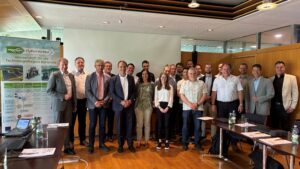 Project meeting at Karlsruhe University of Applied Sciences
Project meeting at Karlsruhe University of Applied Sciences
Together, the project partners have laid the foundations for the development of a hydrogen hub in the Karlsruhe region. In June, they met at Karlsruhe University of Applied Sciences to conclude the first phase of the H2iPortKA project, which was funded by the Baden-Württemberg Ministry of the Environment, Climate Protection and the Energy Sector and supported by the Karlsruhe Project Management Agency.
In the meantime, project manager Dr. Peter Berlet is certain: "We don't want to wait for the planned connection to the German hydrogen core network. The modeling developed in the project already provides a very good basis for cross-sector and networked investments for the benefit of a sustainable hydrogen economy in the Karlsruhe region."
Hydrogen derivatives such as ammonia can be landed via the Rhine even before the pipeline connection. We have also identified areas for electrolysers in order to supplement the import of green hydrogen with our own production and to quickly switch to hydrogen as an environmentally friendly, CO2-free energy source.
The week of hydrogen
The "H2iPort KA Mod" project shows us the possibilities and potential of hydrogen and its use. In the week from June 17 - 21, 2024, a series of lectures took place in Karlsruhe as part of the nationwide "Hydrogen Week". Every day from 6:30 pm, lectures highlighted the areas of politics, research and industry in relation to the use of hydrogen in the Karlsruhe region. Organized by the Faculty of Electrical Engineering and Information Technology at Karlsruhe University of Applied Sciences, the Hydrogen Week attracted a large number of interested visitors to the IHK premises or online via YouTube stream.
Prof. Dr. Karsten Pinkwart from Karlsruhe University of Applied Sciences and the Fraunhofer ICT praised the strong basis for hydrogen research and development in Karlsruhe and drew a positive balance from the series of lectures. Jochen Ehlgötz from the Karlsruhe TechnologyRegion also emphasized the necessity of a hydrogen infrastructure for the economic future of the TechnologyRegion.
Expert interview with Dr. Peter Berlet
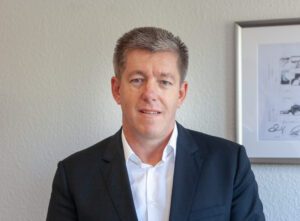
Dr. Peter Berlet is Head of Research and Technology at IAVF Antriebstechnik GmbH. In an interview, he explains the challenges associated with the introduction of hydrogen and also what role the "H2iPortKA Mod" project plays for him.
- You are Head of Research Technology at IAVF. What was your motivation for taking part in the "H2iPortKA Mod" project?
IAVF Antriebstechnik GmbH, based in the Rhine port of Karlsruhe, offers its national and international customers a broad portfolio of testing and engineering services. For a long time now, the focus here has been on using the latest technologies to improve the efficiency and robustness of drives. Sustainably produced fuels play an important role here. This applies to both the fuel and the substances used to lubricate and cool the systems. These can be produced both from renewable raw materials and using electrical energy. In addition to so-called eFuels , hydrogen plays an important role here, as it can make an excellent contribution to decarbonization . It also has clear advantages over pure electrification for some applications, as hydrogen can also be stored for longer periods of time.
In the "H2iPortKA Mod" project, experts from various industries are working together across sectors. The partners are sharing their expertise and, in some cases, their plans for the future in order to create the basis for networked investments in a hydrogen economy. This is unique in the region and offers new opportunities for the participating companies and public partners.
- What role will hydrogen play in future development projects, including in the field of tribology*?
IAVF has long been involved in the development of engines for a wide range of applications. This ranges from mobile applications in cars and commercial vehicles to marine applications and stationary engines for combined heat and power plants in heating networks. Hydrogen creates new challenges here and must, for example, be fed into the combustion process in a highly compressed form. It burns faster and generates higher tribological stresses on some engine components. Hydrogen is the smallest molecule there is. Under pressure, it can diffuse into component surfaces and damage the material near the surface through hydrogen embrittlement . Although no CO2 is produced during combustion, much more water is produced than with conventional fuels. This leads to new requirements for the components and the lubricant in the engine.
The situation is similar for fuel cell drives . In the air path, for example, a number of components such as pre-compressors or recirculation blowers are required, which have to manage without a lubricant due to the cleanliness requirements of the stacks. In some cases, new solutions are required here. (*Tribology is the science and technology of interacting surfaces in relative motion. It covers the entire field of friction and wear, including lubrication).
- What hurdles need to be overcome when it comes to hydrogen and what experiences/learnings have you been able to take away for your company from approvals for hydrogen infrastructure projects?
Initially, the challenge was to introduce our employees to the topic. This ranged from setting up the units to safety issues, which are very important to us. All areas have to be involved, from the construction and operation of the test vehicles to the procurement and distribution of hydrogen. Fortunately, we have been able to draw on the support of public funding from the federal and state governments and further expand our cooperation with the Fraunhofer Institute for Chemical Technology, KIT and Karlsruhe University of Applied Sciences .
In addition, it paid off to seek external help from testing organizations and the authorities of the city and regional council of Karlsruhe at an early stage.
- What trends are discernible for research and development in the context of hydrogen?
Our vision for 2030 is: hydrogen in all sectors. Manufacturers have developed prototypes for the mobility sector as well as for industry, agriculture and the energy sector. They have already shown what is possible in many areas. The complexity and effort involved in upcoming product development will increase considerably.
Politicians must also continue to improve the framework conditions for hydrogen technologies. This includes fiscal hurdles as well as the rapid expansion of the infrastructure. Why, for example, does a truck with a hydrogen engine have to pay energy tax at the filling station, while a vehicle with a fuel cell is exempt? Hydrogen engine technology is comparatively robust and can act as a bridging technology until sufficient green hydrogen with the higher purity required for fuel cells is available everywhere. It should be clear to all stakeholders at an early stage where and when hydrogen will come from pipelines and where other solutions need to be developed. We have already identified this as an important parameter in our project.
Robust and customer-friendly products can significantly simplify the market launch. And, of course, research and development must also ensure that the price is right so that the use of green hydrogen pays off in the end, even without subsidies.
On the hydrogen requirements of the city and region of Karlsruhe
The increasing importance of hydrogen in the energy, industry and transport sectors is becoming more and more apparent. The Center for Solar Energy and Hydrogen Research Baden-Württemberg (ZSW) conducted a survey of companies in Baden-Württemberg on behalf of the H2BW platform, in which future hydrogen requirements in all sectors were specified. In 2024, a cross-sectoral total H2 demand of 3.0 TWh/a (terawatt hours/year) can be seen in Baden-Württemberg, which will rise to 73.5 TWh/a by 2035 and 90.7 by 2040 (of which for electricity: approx. 40 TWh/a). For comparison: In 2021, electricity generation from natural gas, heating oil and hard coal amounted to 19.4 TWh/a in the whole of Baden-Württemberg (Statistisches Landesamt BW 2023).
The industrial sector in the city and district of Karlsruhe also shows a strong increase in demand for hydrogen. Demand in the city will increase tenfold from 500 GWh/a (gigawatt hours/year) in 2025 to 5,000 GWh/a (2040) and in the district from 100 GWh/a to 1,000 GWh/a in 15 years. These figures also result from the planned completion of a hydrogen core network by 2030/32 and consequently a possible supply via pipeline. However, even stronger growth in demand is expected in the transport sector . The H2 demand of the city of Karlsruhe is expected to be 2-5 GWh/a in 2025 and 100-150 GWh/a in 2040. In the district, demand is even expected to increase from 2-5 GWh/a to as much as 200-350 GWh/a, i.e. almost a hundredfold increase in the current demand figure.
Overall and across all sectors , hydrogen demand in the city of Karlsruhe can therefore be expected to grow by 500-700 GWh/a to 8,000 GWh/a (8 TWh) between 2025 and 2040. Hydrogen will therefore be indispensable in the future. It is now important to face up to this task and continue to grow as a pioneering country and region in the field of hydrogen.
H2iPortKAMod as a guest at the 1st Hydrogen Colloquium Baden-Württemberg
Interim results of the modulation attracted a great deal of attention
The 1st Hydrogen Colloquium Baden-Württemberg provided information on a wide range of projects in the field of hydrogen and fuel cell technologies that have already been launched in Baden-Württemberg. The participants in the "H2iPortKa Mod" project from Karlsruhe were also present. Dr. Peter Berlet and Daniel Bull presented the exciting interim results of the modulation. The aim is to optimize the framework conditions for the development of an infrastructure for hydrogen supply in the TechnologyRegion and thus enable the project partners to make more reliable investment decisions.
The H2 Colloquium offered a variety of opportunities to enter into dialog with stakeholders from other initiatives and to exchange ideas on specialist topics.
The Karlsruhe Project Management Agency and the H2BW platform hosted the 2023 Hydrogen Colloquium under the patronage of the Ministry of the Environment, Climate Protection and the Energy Sector.
Karlsruhe hydrogen project presents itself at joint stand of the state of BW
hy-fcell - Expo & Conference of the international hydrogen and fuel cell industry in Stuttgart
The international hydrogen and fuel cell community met at hy-fcell on September 13 and 14 to discuss technological advances, transfer knowledge and open up international markets. The Karlsruhe hydrogen project "H2iPort KA Mod" was also represented at the joint stand at the invitation of the state agency e-mobil bw. This was a good opportunity to provide information about the project and to promote the establishment of a hydrogen import hub in the Rhine port of Karlsruhe. Dr. Peter Berlet (IAVF) and Markus Wexel (TRK) discussed innovative fields of application for hydrogen with the head of the H2BW platform, Isabell Knüttgen. The internationally sought-after meeting place for the industry also provided an ideal platform for exchanging views on current developments in the field of fuel cell and hydrogen technology.
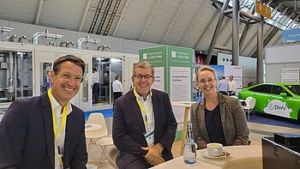
Hydrogen survey of the Karlsruhe TechnologyRegion
In order to drive forward the development of the hydrogen economy in the Karlsruhe TechnologyRegion, a consortium from industry, science and the city of Karlsruhe has joined forces in the "H2iPort KA Mod" research project. The aim is to develop and build a hydrogen import and production infrastructure in the pure port of Karlsruhe. The project is being funded by the Baden-Württemberg Ministry for the Environment, Climate Protection and the Energy Sector as part of the "Climate protection and value creation through hydrogen (KWH2)" program, which takes up measures from the Baden-Württemberg hydrogen roadmap.
A key component of the project is to determine the current and expected hydrogen requirements of companies in the German part of the TechnologyRegion economic area (districts of Germersheim, Karlsruhe, Rastatt, Südliche Weinstraße and the cities of Baden-Baden, Karlsruhe and Landau). We need your cooperation and support. The data obtained is an important basis for currently discussed projects such as a hydrogen import hub at the Rhine port in Karlsruhe (H2iPortKA) or similar projects in the Rhine-Neckar metropolitan region. Click here for the survey .
The state of Baden-Württemberg has also launched a survey, which you are welcome to complete. You can find it here: Hydrogen for Baden-Württemberg: Demand report
Expert interview with Prof. Dr. Karsten Pinkwart
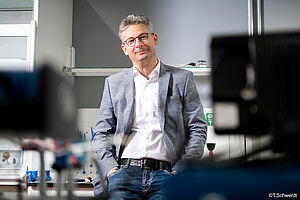 Prof. Dr. Karsten Pinkwart is a member of the German government's National Hydrogen Council and a member of the advisory board of the Hydrogen Roadmap Baden-Württemberg. This is the start of a series of interviews on the subject of hydrogen
Prof. Dr. Karsten Pinkwart is a member of the German government's National Hydrogen Council and a member of the advisory board of the Hydrogen Roadmap Baden-Württemberg. This is the start of a series of interviews on the subject of hydrogen
• Welche Verfahren zur Wasserstoffherstellung gibt es?
Wasserstoff kann auf vielfältigen Wegen bereit gestellt werden. Diese unterscheiden sich insbesondere in Bezug auf ihre Wasserstoffquelle (Wasser, fossile Energieträger, Biomasse, anderweitig organisch und anorganisch gebunden), dem entsprechenden Prozess (Elektrolyse, Reformierung, Pyrolyse, bio-chemische Prozesse, photochemische Prozesse etc.) und dem jeweiligen ökologischen und ökonomischen Fußabdruck. Die jeweiligen Wege der Gestehung werden durch unterschiedlichste Randbedingungen beeinflusst. Vordergründig ist der ökologische Parameter, der durch die Treibhausgasemissionen (CO2) angeben werden kann. Dementsprechend ist grauer Wasserstoff, Wasserstoff, der aus fossilen Energieträgern wie z. B. Erdgas ohne Maßnahmen zur direkten oder indirekten Vermeidung von Treibhausgasemissionen, also mit hoher Treibhausgasemissionslast, hergestellt wird; blauer Wasserstoff ist aus fossilen Energieträgern hergestellter Wasserstoff, bei dem das im Herstellungsprozess anfallende CO2 zu (sehr) großen Teilen abgetrennt und in geologischen Formationen eingelagert wird; türkiser Wasserstoff ist aus fossilen Energieträgern hergestellter Wasserstoff, bei dessen Herstellungsprozess fester Kohlenstoff anfällt, der als Rohstoff für die Weiterverwendung eingesetzt oder auch eingelagert werden kann, sodass es weder direkt noch bei der Verwendung oder Entsorgung der Produkte zur Freisetzung von CO2 in die Atmosphäre kommt. Wasserstoff kann auch mit Hilfe strombasierten Verfahren bereit gestellt werden. Hier wird in gelben Wasserstoff unterschieden, wobei der Strom zur Erzeugung des Wasserstoffs aus dem Netz entnommen und stellt in der Regel einen entsprechenden Strommix dar. Im Falle des roten Wasserstoffs stammt der Strom aus nuklearer Erzeugung. Grüner Wasserstoff wird mit Hilfe erneuerbarer Energien gewonnen. Wasserstoff kann aber auch noch an anderer Stelle aufkommen, wie zum Beispiel aus technologischen Prozessen (Wasserstoff aus der Chlor-Alkali-Elektrolyse, Wasserstoff aus mit Ethan betriebenen Olefinanlagen) oder Wasserstoff aus der thermo- oder biochemischen Konversion von Biomasse; und Wasserstoff aus natürlichen Vorkommen.
• In welchen Bereichen wird Wasserstoff aktuell eingesetzt?
Wasserstoff ist ein vielfältiger Energieträger und wird bereits seit vielen Jahrzehnten an unterschiedlichsten Stellen eingesetzt und hat sich dabei als Ausgangsstoff sehr gut bewährt. Die wesentlichen Nutzer kommen mit ca. 31% aus der petrochemischen Industrie, wo Wasserstoff beim Hydrocracking bzw. dem Hydrotreating Verwendung findet, und mit 63% aus der „klassischen“ chemischen Industrie. Hier werden vor allen Dingen Ammoniak und Methanol hergestellt; aber auch bei Prozessen zur Bereitstellung von Polymeren, Polyurethan oder Oxylalkoholen und Fettsäuren wird Wasserstoff eingesetzt. 6% des Wasserstoff werden in der Prozessindustrie als Spül- und Schutzgas oder aber auch der Glasproduktion eingesetzt. Unter 1% wird der Wasserstoff im Bereich der Mobilität, Halbleiterindustrie und als Kraftstoff für die Raumfahrt verwendet.
• Welche Rolle kann Wasserstoff in der Stromerzeugung spielen?
Die aktuell angestoßenen Transformationsprozesse in der Gesellschaft stehen alle im Zusammenhang mit dem Aufhalten des Klimawandels und damit der Emission fossilen Kohlendioxid. Hier lassen sich im Wesentlichen drei Sektoren ausmachen die dazu einen Beitrag liefern. Dies sind der Industrie-, der Mobilität- und der Energie-/Wärmesektor. Letzterer Sektor erzeugt die benötigte elektrische und thermische Energie mittels der Nutzung von Erdöl, Kohle und Erdgas. Großtechnisch wird Strom und Wärme in unseren Kraftwerken mit Hilfe von Erdgas und Kohle bereitgestellt. Um zukünftig weiterhin die an diesen Anlagen angeschlossenen Verbraucher zu versorgen, ist es notwendig diese Kraftwerke auf grünen Wasserstoff als Energieträger umzustellen soweit keine anderen nachhaltigen Erzeugungsoptionen wie zum Beispiel Geothermie Vorort genutzt werden können.
• Wie kann Wasserstoff gespeichert werden?
Die Speicherung von Wasserstoff kann gleichfalls auf verschiedene Art und Weise erfolgen. Zuerst einmal sind die physikalischen Möglichkeiten der stofflichen Speicherung zu nennen, dies bedeutet ich kann Wasserstoff unter Druck in Gasspeichern bevorraten oder aber als verflüssigt in entsprechenden tiefkalten Tanks. Darüber hinaus kann ich mir die Eigenschaft des Wasserstoff zu Hilfe nehmen, dass dieses Molekül kaum Volumen einnimmt und so ist es möglich dieses in sogenannten Metallhydriden einzulagern. Eine weitere Option besteht in der langfristigen Speicherung als Derivat. Hierbei reagiert der Wasserstoff mit Stickstoff oder Kohlendioxid und daraus entsteht im ersten Fall Ammoniak und im zweiten Methanol. Beide Substanzen werden seit mehr als 70 Jahren in der chemischen Industrie produziert (mit grauen Wasserstoff), gelagert, transportiert und verwendet. Der Umgang mit diesen Speichermedien ist damit sehr gut bekannt.
• Warum ist Wasserstoff so wichtig für ein Gelingen der Energiewende?
Energiewende bedeutet auf der einen Seite unsere Gesellschaft zu defossilieren, so dass kein Kohlendioxid mehr in die Umwelt aus fossilen Energieträgern imitiert wird. Auf der anderen Seite ist bekannt, dass in ca. 40 Jahren kein Erdöl mehr für all die chemischen Prozesse und den daraus abgeleiteten Produkten mehr zur Verfügung steht. Mit dem Einsatz grünen Wasserstoffs in den Sektoren Industrie, Mobilität und Energie/Wärme kann es / muss es gelingen den Klimawandel aufzuhalten. Daher muss es der Weltgesellschaft gelingen, diesen nachhaltigen Energieträger zum großflächigen Einsatz zu bringen.
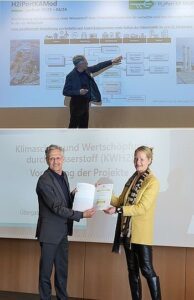 Funding for the development of an H2 infrastructure in the Karlsruhe TechnologyRegion
Funding for the development of an H2 infrastructure in the Karlsruhe TechnologyRegion
Stuttgart, 04.04.2023. Environment Minister Thekla Walker presented the funding certificate to the "H2iPortKA Mod" project consortium in Stuttgart on Tuesday.
The conditions for producing and importing hydrogen in the future are to be created in Karlsruhe's Rhine port. Business, science and the city administration have joined forces to build the necessary infrastructure. Their joint research project is called "H2iPort Ka Mod" and is being supported by the Baden-Württemberg Ministry of the Environment, Climate Protection and the Energy Sector with almost one million euros as part of the "Climate protection and value creation through hydrogen (KWH2)" program. "The financial support from the state enables us to lay the foundations for the distribution and supplementary production of green hydrogen on a larger scale," says Prof. Bernhard Kehrwald, Managing Director of #IAVF Antriebstechnik, who heads the project consortium.
Under the leadership of Prof. Marco Braun from Karlsruhe University of Applied Sciences, the system parameters for the modeling are currently being recorded in order to determine the optimum of the complex interaction of the various technical facilities.
At the same time, #TechnologieRegion Karlsruhe GmbH has launched a survey on the future hydrogen requirements of energy-intensive companies: Click here for the survey.
Project partners
Other participating companies:
- Air Products GmbH
- Axpo Solutions AG
- EnBW AG
- H2-Global Foundation
- Mabanaft GmbH & Co. KG
- MiRO Mineraloelraffinerie Oberrhein GmbH & Co. KG
- Netze Südwest GmbH
- Siemens Energy AG
- Stadtwerke Karlsruhe GmbH
